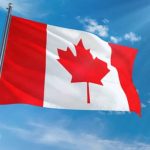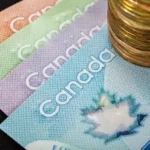By David Orchard, Ottawa Citizen, January 18, 2018
In 1854, the Canadian colonies entered a free trade agreement with the United States. In 1866, the Americans cancelled it, believing that the Canadian colonies had become so dependent on the US economically that they would ask, or beg, for entry into the American Union.
Instead, the Canadians decided to take the bold step of independence. They negotiated a union of the Canadian colonies and began building a Canadian-owned and controlled economy, including the world’s longest railway.
Canada’s next major free trade agreement with the US was in 1988 (FTA), later expanded to include Mexico in 1994 (NAFTA). Under their terms, much of Canada’s economy has been bought up by American owners – everything from Hudson’s Bay Company to Tim Hortons and Stelco. Whole industries have been taken over by US investors, including both our national railways. US corporations have the right to sue Canada for any law or regulation that causes them loss or damage and which they feel contravenes the spirit of NAFTA. (Canada has been sued three dozen times and paid out more than $200 million in NAFTA penalties.)
However, the US government may again save us from ourselves.
The US is demanding even greater concessions from Canada in a “renegotiation” of NAFTA, including sweeping rights to buy up what is left of Canada’s economy. It has stated that it is ready to trigger the sixmonth cancellation clause of NAFTA. In response, the Canadian government has spent millions trying to convince it not to do so.
As in 1866, Canada has a choice: to integrate itself even further into the US economy, giving up the dream of Canadian independence, or it can do what it did in 1866: step forward and build a Canadianowned, world-class economy. It can stop pleading with the US to keep NAFTA and emerge as a significant competitor to our neighbour, not its colony.
Before Canada signed the FTA and NAFTA, it traded with the US and the rest of the world under the General Agreement on Tariffs and Trade (GATT), now the World Trade Organization (WTO). If the FTA and NAFTA were terminated, Canada would automatically return to trading with the US under the WTO, under whose terms we did much better than under the FTA and NAFTA.
Under the GATT/WTO, Canada has allies and the US was not able to impose punishing tariffs on our softwood lumber exports or our aircraft industry. It was unable to destroy our wheat marketing system, buy up our railways or shut down our steel industry.
Norway, much smaller than Canada, declined to enter the European Union although it was under great pressure to do so. It retained control of its oil and gas and other industries through publicly owned corporations. The result for Norway is no debt, no deficit, free child care and university education, virtually non-existent homelessness, free dental care for all under 18, generous old age pensions and a $1 trillion surplus in its sovereign wealth fund.
Canada by contrast, after almost three decades of “free trade” with the US, has more than $1.2 trillion in federal and provincial debt, large deficits at every level, no national child or dental care, high university tuition, miserly old age pensions, years of massive budget cuts, and giveaway prices for its exports of oil, gas, timber and minerals.
For 150 years, great Canadian leaders have warned that without an economic border with the Unite States, we would soon no longer have a political border.
We once owned the world’s largest farm machinery maker, Massey Harris, headquartered in Toronto; built the world’s largest and most respected marketer of wheat and barley, the Canadian Wheat Board, based in Winnipeg; created a great transcontinental railway system, beginning in Montreal, which tied our country together; and saw Vancouver’s shipyards produce the beautiful Fast Cat ferry.
Instead of spending hundreds of billions on foreign-made machinery, electronics, automobiles, ships, fighter jets and passenger aircraft (even payroll systems for federal employees!), we can build our own, both for the domestic and export market.
We once designed and built the world’s most advanced jet interceptor, the Avro Arrow, so we know it can be done. With Canada’s resources and ingenuity, it could create a prosperous, domestically controlled economy that would give Canadians multiple benefits, security and pride of ownership. All that is required is some of the will that drove our ancestors to create an alternate power in North America. As GeorgeÉtienne Cartier, the great Québécois Father of Confederation, put it, “Now everything depends on our patriotism.”
David Orchard was twice a contender for the leadership of the Progressive Conservative Party of Canada. He is the author of The Fight For Canada: Four Centuries of Resistance to American Expansionism. He can be reached at davidorchard@sasktel.net.
Our Comment
It was clear from the start! NAFTA has always been less than free and more than trade! And has continentalization, the possible ultimate consequence of “free trade,” ever seemed less attractive?!
Élan





